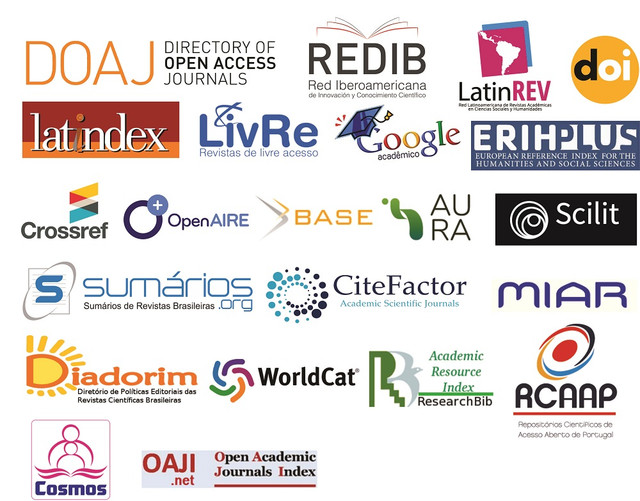LA INFLUENCIA DE LA REALIDAD VIRTUAL EN LA REHABILITACIÓN COGNITIVA DE PACIENTES CON DAÑO CEREBRAL POR TRUDIUM: UN ESTUDIO DE CASO DE ‘LUCAS’
DOI:
https://doi.org/10.59087/biofarma.v4i1.39Palabras clave:
Realidade virtual, reabilitação cognitiva, trauma crânioencefálicoResumen
Este estudio presenta un caso de rehabilitación cognitiva de Lucas, un paciente de 34 años que sufrió un traumatismo craneoencefálico (TCE) en un accidente automovilístico. Utilizando tecnología de realidad virtual (VR) integrada con técnicas tradicionales de neuropsicología, Lucas participó en 12 sesiones durante tres meses. La intervención se centró en mejorar las funciones ejecutivas, la atención y la memoria. Investigación desarrollada por el Centro de Estudios Biofarma corrobora la efectividad de la realidad virtual para maximizar la neuroplasticidad y la rehabilitación cognitiva en pacientes con TCE.
Descargas
Citas
Bohil, C., Alicea, B. & Biocca, F. Virtual reality in neuroscience research and therapy. Nat Rev Neurosci 12, 752–762 (2011). https://doi.org/10.1038/nrn3122
Kauffman, A. (2004). The Kauffman Assessment Battery for Children. Psychological Assessment Resources. https://doi.org/10.1002/9780470479216.corpsy0486
Platz F, Kopiez R, Lehmann AC, Wolf A. The influence of deliberate practice on musical achievement: a meta-analysis. Front Psychol. 2014 Jun 25;5:646. https://doi.org/10.3389/fpsyg.2014.00646 PMID: 25018742; PMCID: PMC4073287.
Rizzo AS, Koenig ST. Is clinical virtual reality ready for primetime? Neuropsychology. 2017 Nov;31(8):877-899. https://doi.org/10.1037/neu0000405 PMID: 29376669.
Rizzo, A., Koenig, S., & Lange, B. (2023). Clinical virtual reality: The state of the science. In G. G. Brown, B. Crosson, K. Y. Haaland, & T. Z. King (Eds.), APA handbook of neuropsychology: Neuroscience and neuromethods (pp. 473–491). American Psychological Association. https://doi.org/10.1037/0000308-023
Simms, D.C., O’Donnell, S., Molyneaux, H. (2009). The Use of Virtual Reality in the Treatment of Posttraumatic Stress Disorder (PTSD). In: Shumaker, R. (eds) Virtual and Mixed Reality. VMR 2009. Lecture Notes in Computer Science, vol 5622. Springer, Berlin, Heidelberg. https://doi.org/10.1007/978-3-642-02771-0_68
Morina N, Kampmann I, Emmelkamp P, Barbui C, Hoppen TH. Meta-analysis of virtual reality exposure therapy for social anxiety disorder. Psychol Med. 2023 Apr;53(5):2176-2178. https://doi.org/10.1017/S0033291721001690 Epub 2021 May 18. PMID: 34001293; PMCID: PMC10106288.
Ribé-Viñes JM, Gutiérrez-Maldonado J, Zabolipour Z, Ferrer-Garcia M. Efficacy of virtual reality-based exposure therapy for the treatment of fear of flying: a systematic review. The Cognitive Behaviour Therapist. 2023;16:e19. https://doi.org/10.1017/S1754470X23000119
Jang S, Choi J, Oh J, Yeom J, Hong N, Lee N, Kwon JH, Hong J, Kim JJ, Kim E. Use of Virtual Reality Working Memory Task and Functional Near-Infrared Spectroscopy to Assess Brain Hemodynamic Responses to Methylphenidate in ADHD Children. Front Psychiatry. 2021 Jan 21;11:564618. https://doi.org/10.3389/fpsyt.2020.564618 PMID: 33551860; PMCID: PMC7859615.
Zasadzka E, Pieczyńska A, Trzmiel T, Hojan K. Virtual Reality as a Promising Tool Supporting Oncological Treatment in Breast Cancer. Int J Environ Res Public Health. 2021 Aug 19;18(16):8768. https://doi.org/10.3390/ijerph18168768 PMID: 34444513; PMCID: PMC8393836.
Descargas
Publicado
Cómo citar
Número
Sección
Licencia
Derechos de autor 2024 Biofarma - Multidisciplinary Scientific Journal of Biology, Pharmacy and Health

Esta obra está bajo una licencia internacional Creative Commons Atribución 4.0.
Tiene derecho a:
*Haga clic en la imagen de la licencia de arriba para obtener más detalles.



